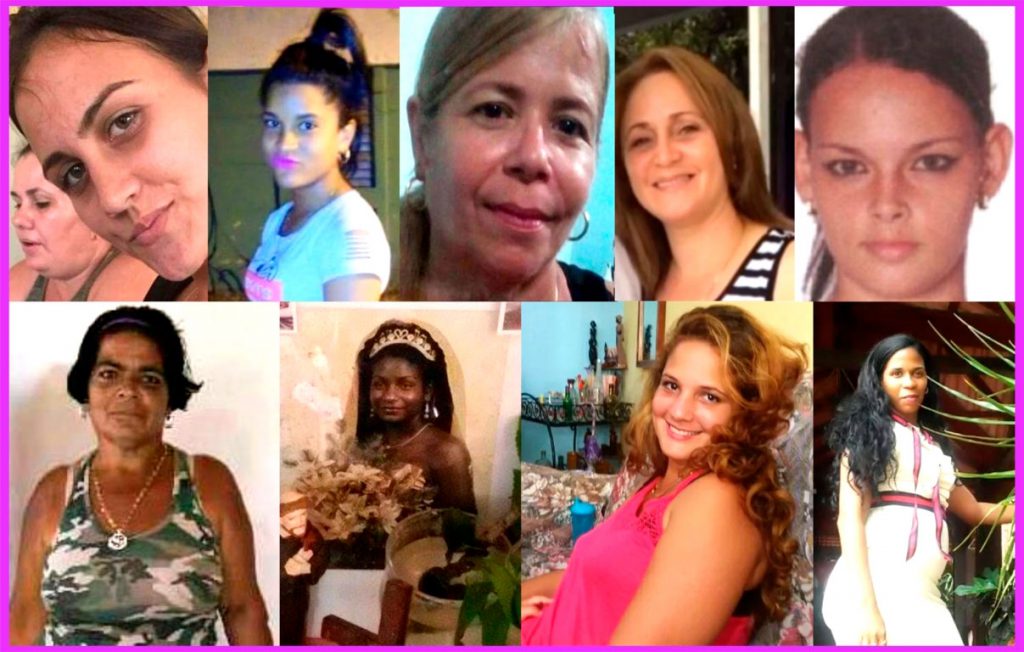Femicide is Officially Recognized in Cuba, One of Few Advances in 2019
By Osmel Ramirez Alvarez

HAVANA TIMES – Femicide came to mind as the subject of this article when I recently listened to a news feature on Canal Caribe. Representatives from the Ministry of Domestic Affairs were openly talking about femicide and giving statistics, which was strange because it felt like they were talking about our country.
Suddenly, I realized that were talking about Uruguay and I became disappointed. It was a lot to ask for things to change so much that they would be talking about a taboo subject like this one.
However, at least we can say that one of the few accomplishments of 2019 (maybe the only one, I can’t think of another one) is that femicide was officially recognized as a crime here in Cuba. Although it was quietly recognized, as if they weren’t changing anything. It happened in April, in an ECLAC (Economic Commission for Latin America and the Caribbean) report relating to the 2030 Agenda for Sustainable Development Goals.
Even though femicide is only recognized as such in cases involving the victims’ intimate partners, in which 50 women were killed in 2016 (the year it was assessed), it was still a great step forward. It has been the result of a difficult and never-ending struggle that has gone on for decades now, by civil society more openly and voices that have also risen within government institutions, with the subtlety this involves.
The alarming news about Uruguay broadcast on Cuban TV spoke about this country’s great problem with femicide, which is apparently not the case in our country judging by the almost zero coverage femicide receives in national media. Checking figures on the Internet, in 2016, 22 cases were reported in Uruguay, while Cuba reported 50 cases out of the 137 women who were killed that year.
Quite a few of these other murdered women would have classified as femicide under the international definition which doesn’t apply here, but we don’t know the real figure. Cuba’s stats only cover the women killed by their partners and not by rapists or the partners of other women who tried to defend them, for example, which has left out at least two of the most prolific cases of femicide on social media this year.
Taking a guess, the real figure should stand above 90 cases in total, maybe over 100 even. Even though Uruguay’s population is three times smaller than Cuba’s, if you multiply 22 x 3 that’s 66, which is still far behind Cuba’s own problem with femicide. The difference here is that other countries are more transparent with their data because it’s a civil right. So civil society can have data tools to make visible their problems and shine a light on their social struggles. This isn’t the case in Cuba. We are still fighting for things that are basic rights in other places.
Looking up more and more numbers, I find that this South American country that I have taken as an example because of the news feature I’ve mentioned, had similar figures up until this year, just like our own country did. The difference is that civil society are able to take action and they have freedom of speech. Two things that are seriously limited in Cuba.
Another thing my research led me to find, was that femicide in my municipality is extremely high. From what I remember and from what I’ve heard (because the media doesn’t cover it, I must repeat), this year, there were two cases: a jealous lover and an ex-boyfriend and inmate killed women in the prime of their lives, because machismo didn’t allow them to let go and accept rejection.
There are several cases every year. I can easily remember over ten in recent years. The brother of a dear neighbor of mine killed his wife because she was cheating on him; a nurse and friend of mine had an ex-boyfriend who wanted to get back together with her and she didn’t want to, so he raped and killed her.
Ten blocks away, some years ago, a husband struck the victim in the head with an axe in the middle of the street, in front of their children; last year, a woman showed up dead in a car trunk; two years ago, an ex-boyfriend killed a girl from my neighborhood with a machete after chasing after her down the street and catching her in a house where she had tried to hide. And there are so many more!
Anyway, the fact that this social scourge has been officially recognized is a step forward. Let’s hope that this is just the beginning and that statistics and analysis of the problem becomes more transparent and reliable. And more importantly, that it isn’t driven by international organizations’ requirements but by the importance that we citizens have access to information and the need to take official and non-official civic action.
